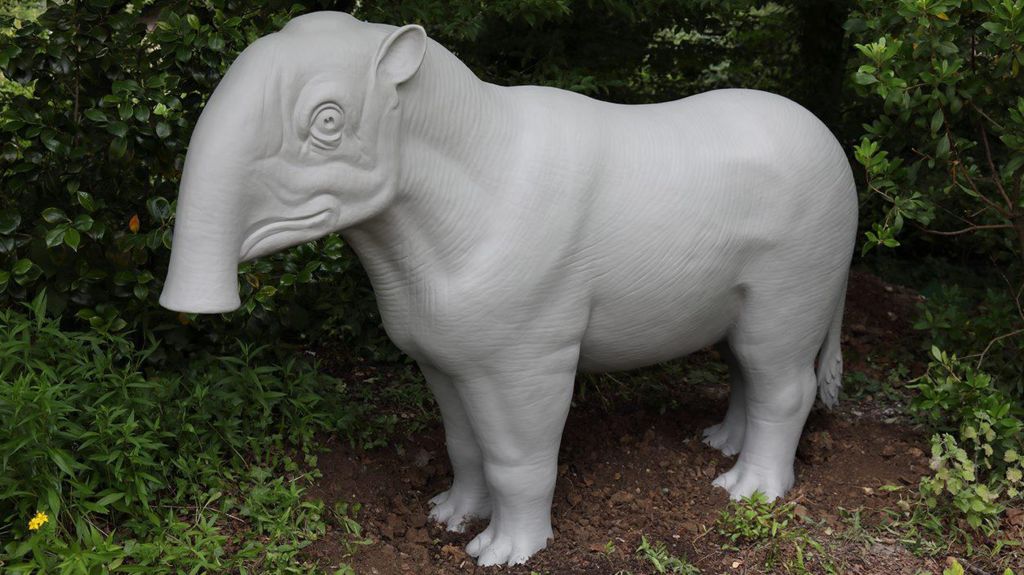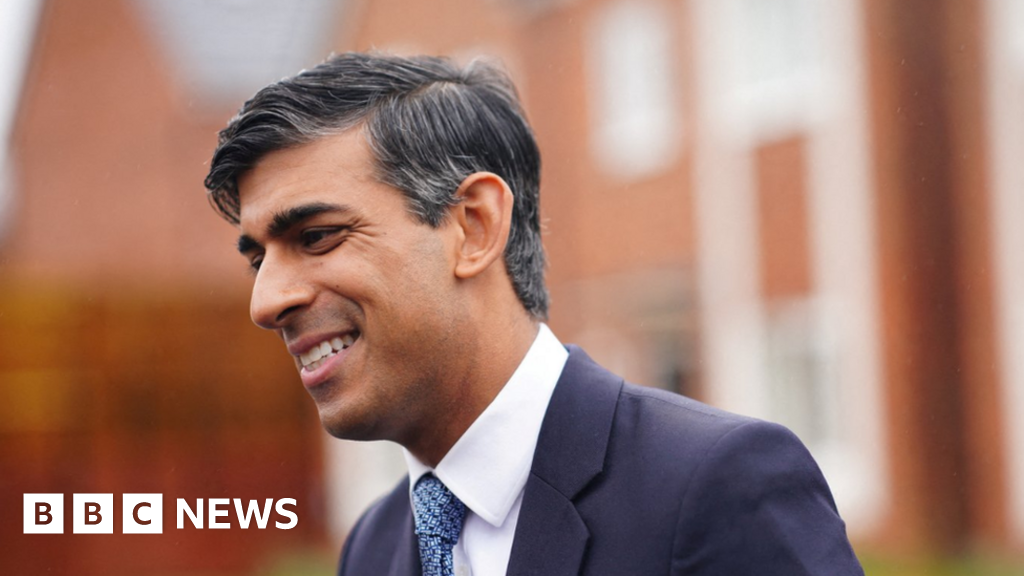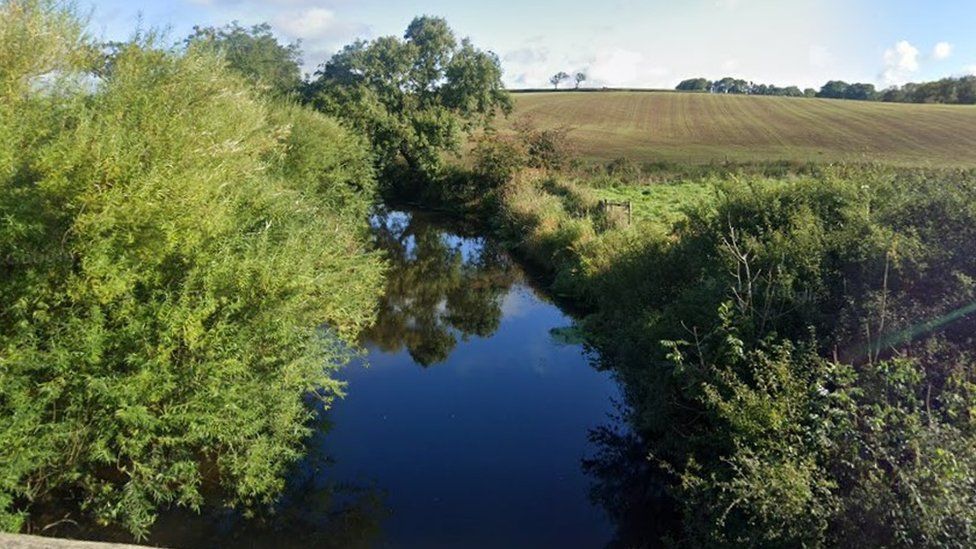In south-east London's Crystal Palace Park, a life-size replica of one of the vanished Crystal Palace Dinosaurs was unveiled.
The sculpture, according to the Natural History Museum, is an exact replica of the original palaeotherium magnum, an extinct mammal that vanished from the park in the 1960s and was only distantly related to horses.
The museum claimed that this was the first attempt to replace a lost sculpture at the location in 20 years.
The project will be overseen by an architectural firm as part of the "regeneration plan" for the park that Bromley Council has announced.

The sculpture is an exact replica of the extinct palaeotherium magnum, a distantly related mammal to horses.
The new work was produced in association with researchers and historians from the Natural History Museum and University of Portsmouth by palaeoartist Bob Nicholls.
Making a model of the mammal out of wood, polystyrene, and chicken wire before covering it in clay and molding it in fiberglass was a part of the challenging work.
The Friends of Crystal Palace Dinosaurs and the new Crystal Palace Park Trust provided funding for the undertaking.
The palaeotherium magnum was about the size of a "small, chunky pony" and lived on Earth between 44 and 33 million years ago, according to Professor Adrian Lister of The Natural History Museum, an expert on palaeo mammals.
The sculptures are "of huge historic and scientific importance," according to Ellinor Michel, an evolutionary biologist at the Natural History Museum and the chair of the Friends of Crystal Palace Dinosaurs.
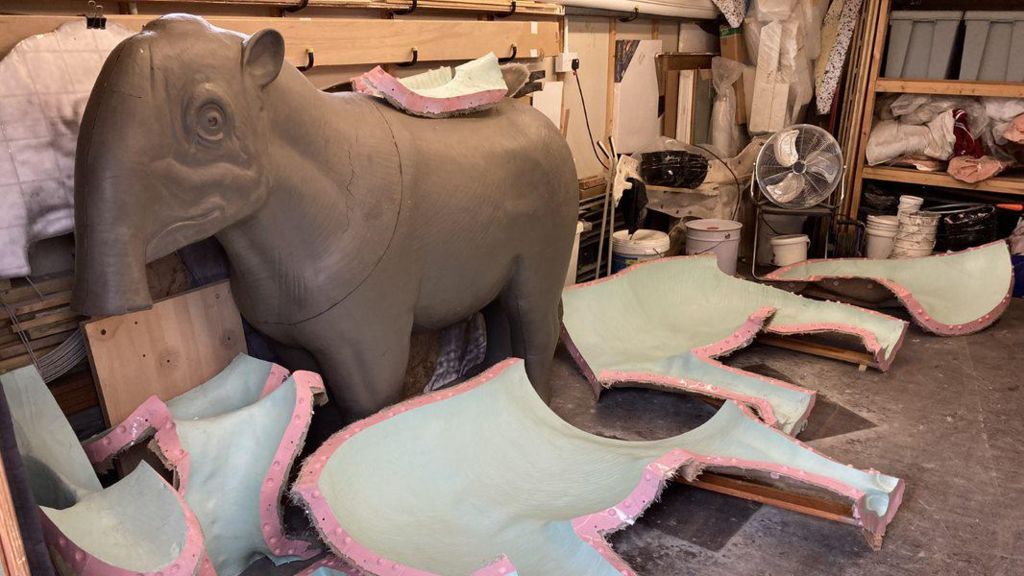
Before a fiberglass mold was made, a clay model of the animal was sculpted.
More than 30 sculptures of extinct animals and nearly 40 geological exhibits make up The Crystal Palace Dinosaurs.
They were produced between 1852 and 1855 by natural history artist Benjamin Waterhouse Hawkins, and they stand in for the first significant global science outreach initiative.
Due to their poor condition and "immediate risk of further rapid deterioration," the original Grade I-listed dinosaur sculptures and the surrounding land are now ranked as the highest priority on Historic England's heritage at-risk register.
The unveiling comes after the National Lottery Heritage Fund awarded Crystal Palace Park £304,000 in development funding in March, ahead of a larger $5 million regeneration project award.
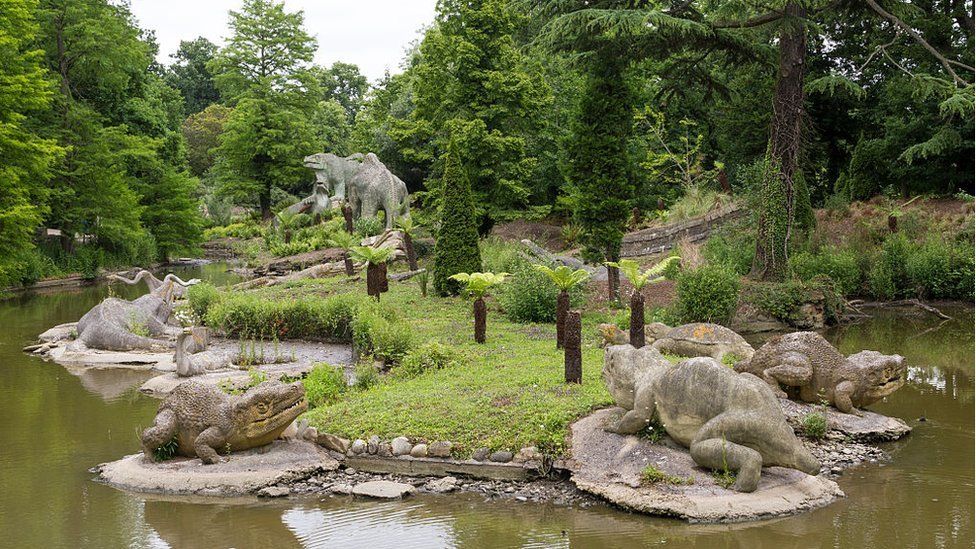
In March, the National Lottery announced funding for a revitalization project in Crystal Palace Park.
Additionally, it coincides with Bromley Council's plan to regenerate the park, which includes a £17.4 million project to restore the park's original elements, including the last of the Crystal Palace Dinosaurs, the Italian Terraces, and the location of the former palace.
Architects HTS Design have been named the lead consultants for the current phase of the project after winning a competition held by Bromley Council.
"I know locals and visitors will be eager to see progress being made on the major restoration works including in this next stage, but there is also much more work going on around this to ensure that a long-term model is created for the park, that firmly connects its heritage to the local community and economy," said Councillor Yvonne Bear from Bromley Council.
. ”

